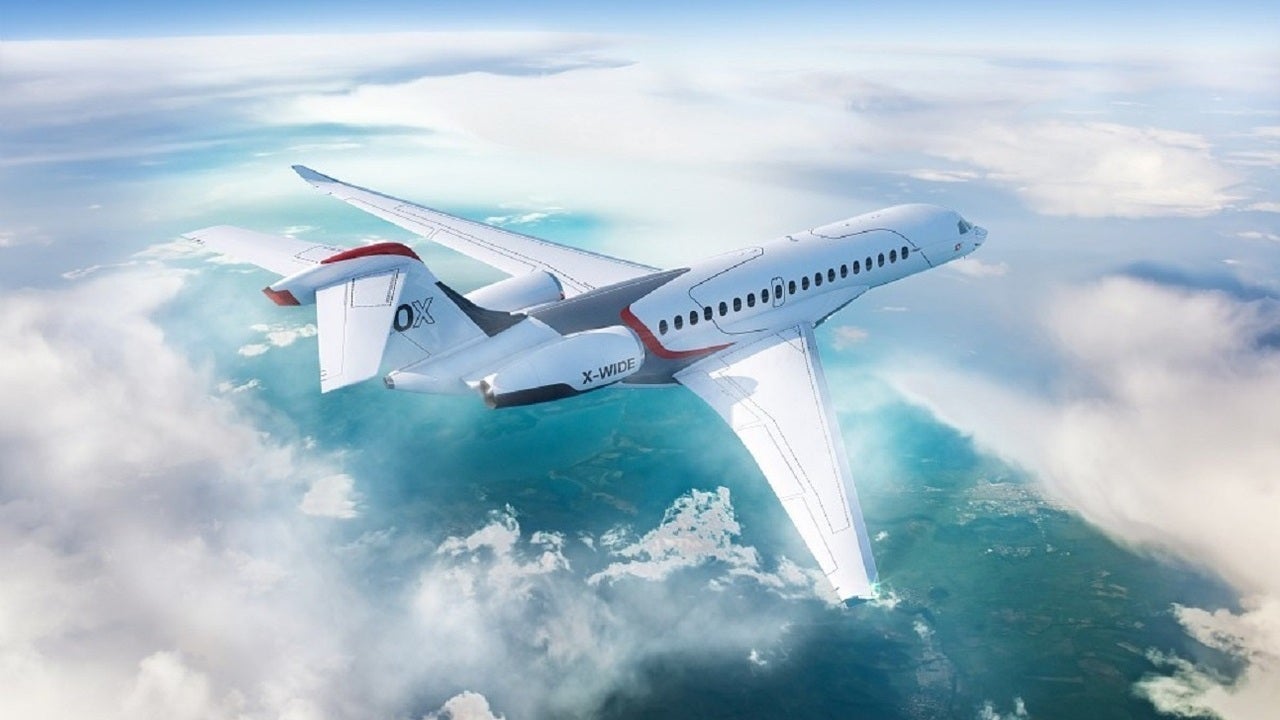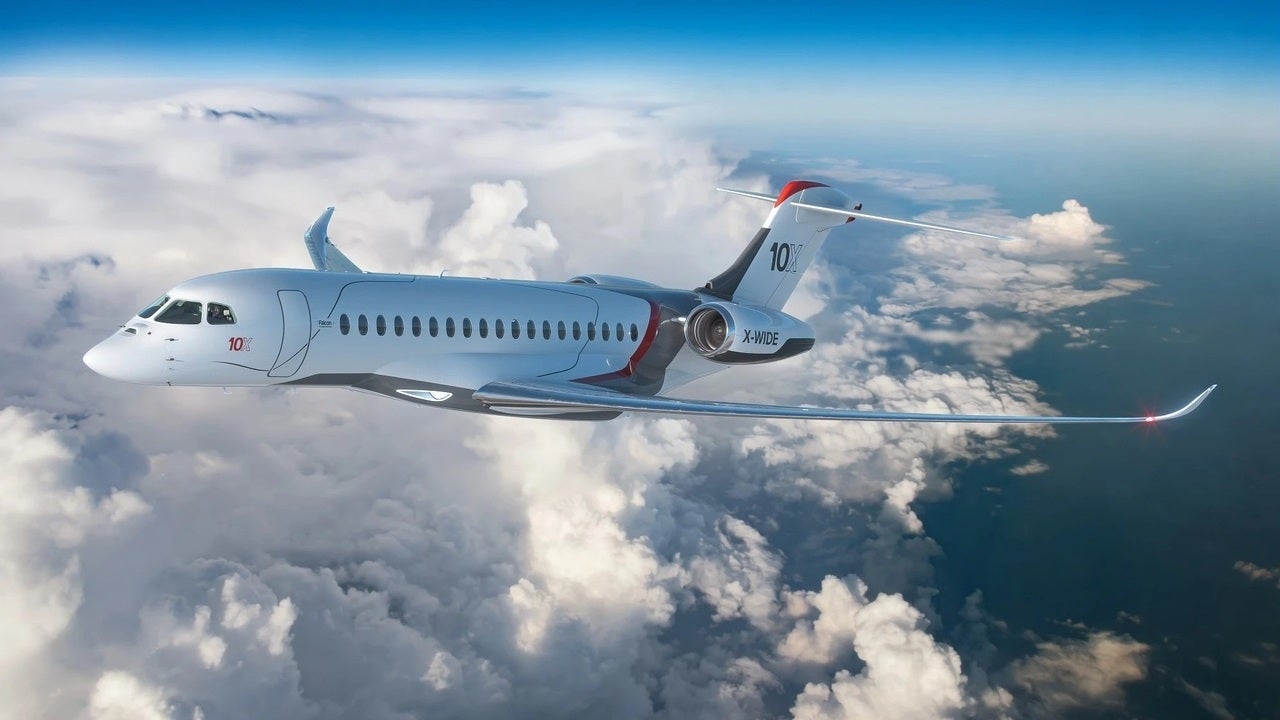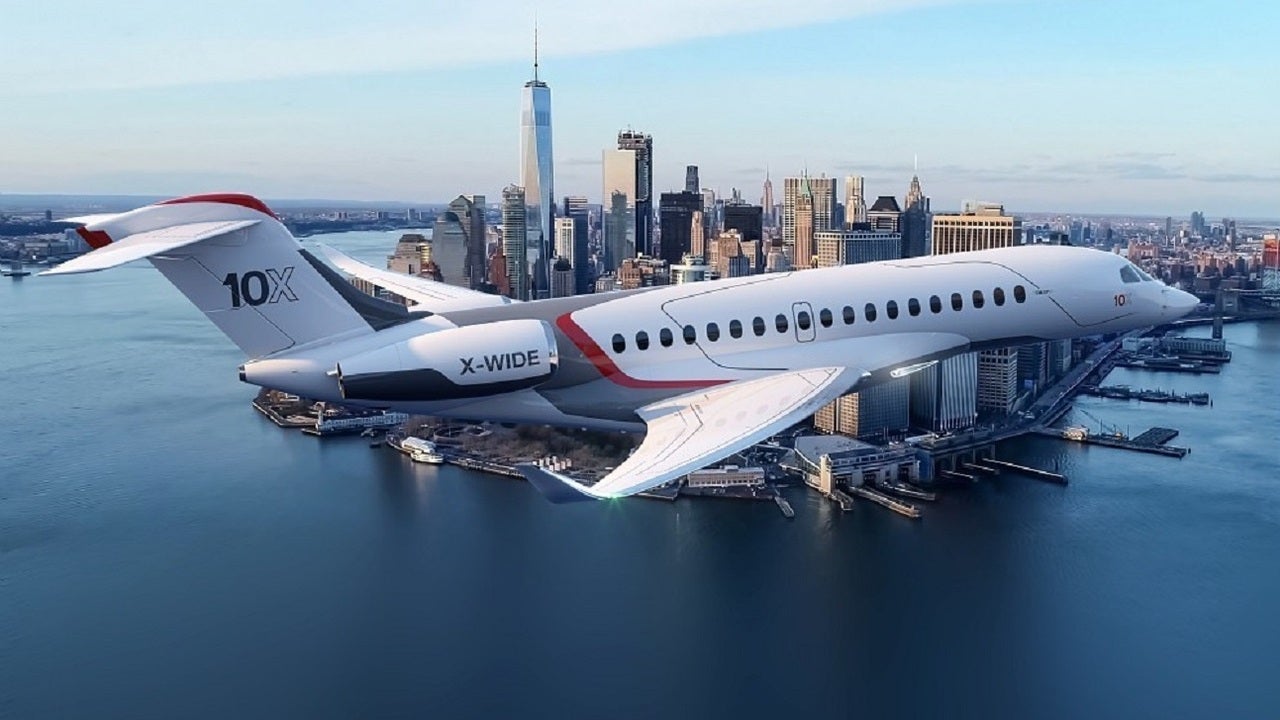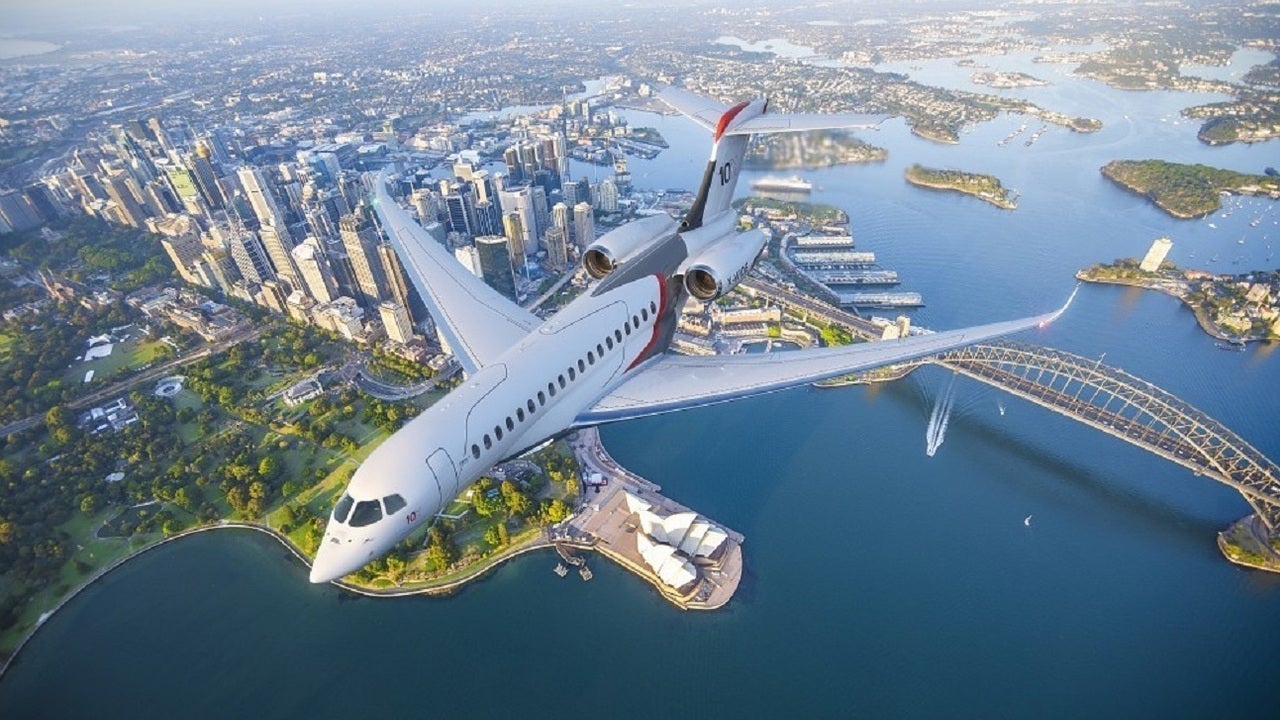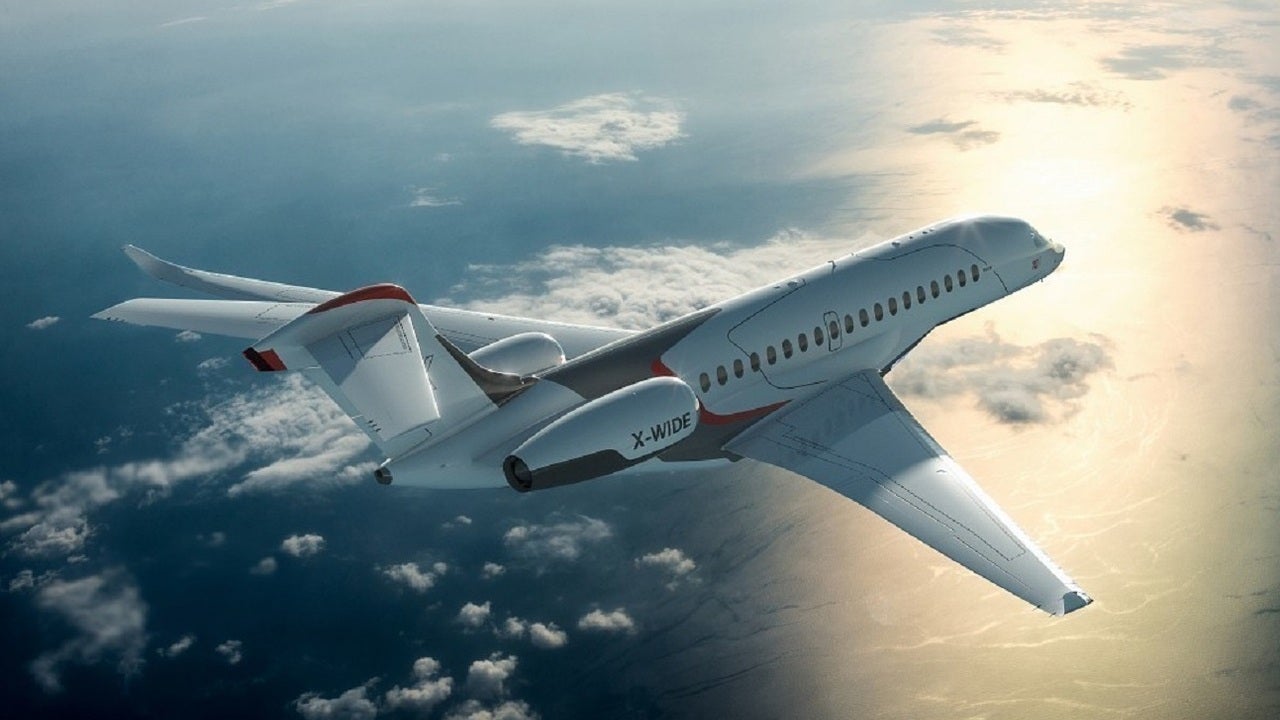French aircraft manufacturer Dassault Aviation introduced the Falcon 10X, a new advanced high-speed, ultra-long-range business jet, in May 2021.
The latest business jet in the Falcon family, it is expected to enter service by the end of 2025.
The twin-engine aircraft was showcased during a digital ceremony at Le Bourget airport in Paris, France. It is designed to provide better comfort, versatility and technology than any other purpose-built business jet.
Falcon 10X features
A striking feature of the Falcon 10X is its cabin, which is claimed to be the biggest and most comfortable in the business aviation market. It offers greater flexibility and a wide selection of interior configurations.
The high-speed wings of the aircraft will be made from carbon fibre composites, which will enable increased strength as well as reduced drag and weight. With a very high aspect ratio, the wings will feature advanced retractable high-lift devices that will allow greater manoeuvrability at low approach speeds.
The baggage compartment will be one of the largest in its class, with abundant space for a transoceanic journey.
The Falcon 10X will be equipped with a new fuselage with 38 extra-large windows, which will be approximately 50% larger than those of its predecessor, the Falcon 8X.
On-board flight control systems
The Falcon 10X will be equipped with the Falcon Digital Flight Control System (DFCS) technology, a next-generation digital flight control system. DFCS is a trajectory-based technology with auto-trimming capability, which reduces the need for frequent pilot corrections, smoothing the flight path and reducing the burden on the pilot.
Connected to the DFCS, the unique Dassault Smart Throttle feature will serve as the aircraft’s primary power control. It links the digital power management of both the engines and will automatically adjust power requirements.
Furthermore, the Smart Throttle comes with a protection feature that allows the pilot to press a button and automatically transition the aircraft to a safer altitude and speed if they are disoriented or in case of turbulence.
The push-button safety technology is derived from the French company’s Rafale fighter aircraft.
Cabin details
The cabin will be 2.03m tall and 2.77m wide, making it approximately 5cm taller and 20cm wider than the tallest and widest business jets currently operational. The 16.40m-long cabin will offer 78.70m³ of volume, while the baggage volume will be 5.6m³.
The flexibility of the cabin design allows the aircraft to feature either four equally-sized cabin zones or customised interiors with different zone lengths.
The cabin can be fully configured to include customised interiors, such as an expanded dining or conference area, a private stateroom with a queen-size bed, an enlarged master suite room with a private stand-up shower or a dedicated entertainment area with a large-screen monitor.
The aircraft will have a cabin pressure of 3,000ft while flying at 41,000ft (12,497m). It will feature an advanced filtration system that will provide 100% pure air.
In-flight connectivity
The Falcon 10X jet will provide onboard connectivity through FalconConnect, an all-in-one suite of services and applications. FalconConnect is a flexible technology that will help manage broadband usage and reduce costs.
It will provide access to networks including 3G/4G on the ground, Inmarsat L-Band, Datalink, Iridium Classic and Next, Wi-Fi, Viasat Ku and Ka-Bands or Jet ConneX Ka-Band, allowing reliable in-flight communications and access to the internet even in remote conditions. Passengers will be able to access high-definition entertainment on personal gadgets or large monitors.
Engine specifications of Falcon 10X
The Falcon 10X will be powered by Rolls-Royce’s Pearl 10X engine, which is capable of delivering more than 18,000lb of thrust. The engine is Rolls-Royce’s most advanced and efficient engine under development.
Pearl 10X is the third and most powerful version of the company’s Pearl engine family. It was designed in partnership between Rolls-Royce and Dassault. The new engine combines Pearl family architecture with innovative new technologies to improve the efficiency of the aircraft’s propulsion system.
The next-generation engine will feature 3D-printed combustor tiles, produced using a complex additive layer manufacturing process.
Furthermore, it is designed to deliver a 5% reduction in specific fuel consumption (SFC) and operate on 100% sustainable aviation fuel (SAF).
Performance of Dassault Aviation’s latest business jet
The Falcon 10X aircraft will be able to reach a maximum altitude of 51,000ft (15,545m) and a maximum range of 7,500nm (13,890km) at a speed of Mach 0.85 (1,049.6km/h).
The advanced business jet will achieve a top speed of Mach 0.925 (1,142.2km/h) and require a landing distance of 2,500ft (762m).

